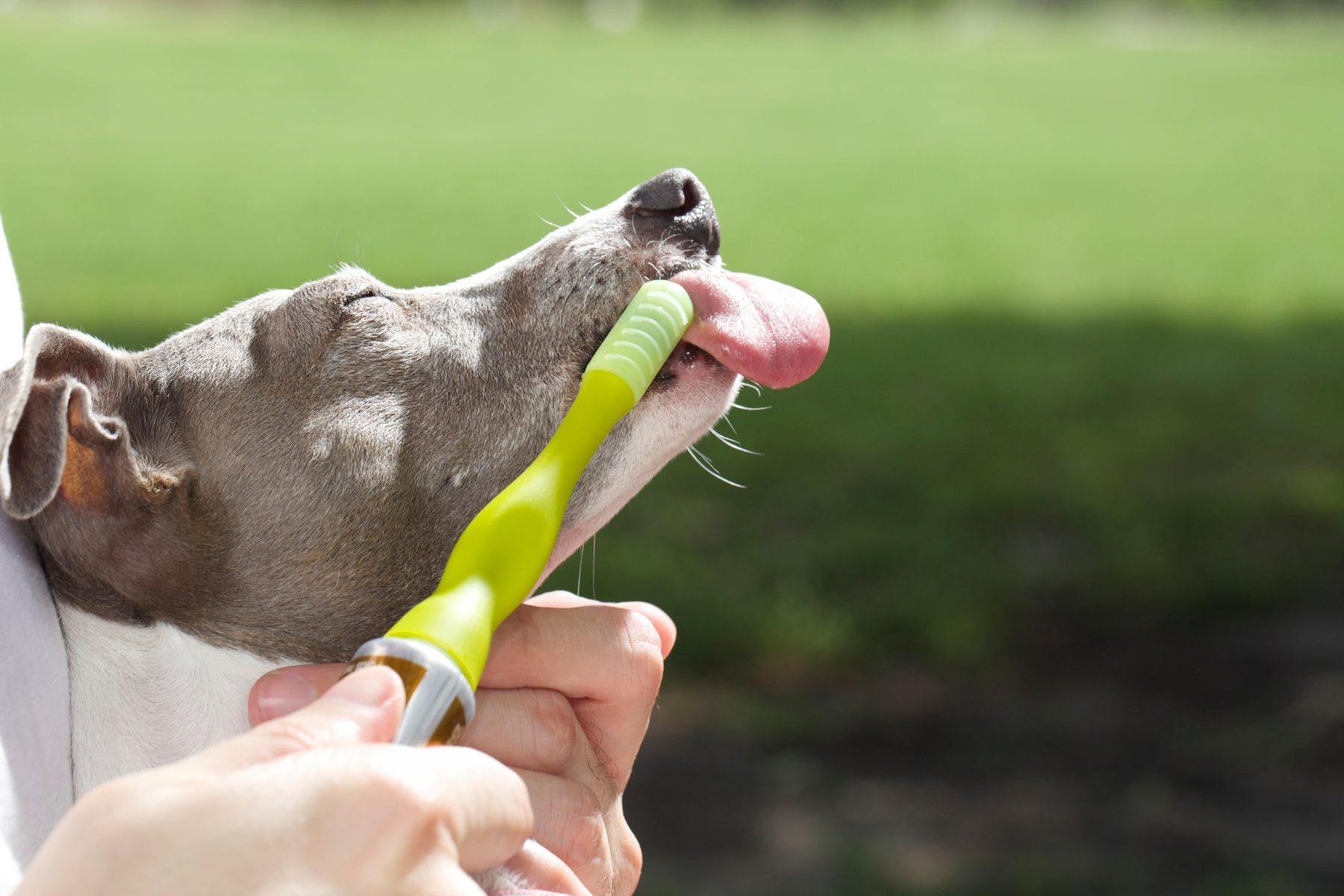
You’ve probably seen it—the nasty brown-stained teeth when your dog smiles, pants or yawns.
 Perhaps this isn’t the topic of conversation you’d bring up at the dinner table, but it’s one that pet parents shouldn’t avoid. Tartar buildup on your dog’s teeth can lead to serious health problems. It doesn’t take long to form and it gets right to work. It’s your job, as a pet owner, to take care of your dog’s dental health, which means taking care of tartar before it becomes a problem.
Perhaps this isn’t the topic of conversation you’d bring up at the dinner table, but it’s one that pet parents shouldn’t avoid. Tartar buildup on your dog’s teeth can lead to serious health problems. It doesn’t take long to form and it gets right to work. It’s your job, as a pet owner, to take care of your dog’s dental health, which means taking care of tartar before it becomes a problem.
The Problem with Tartar
Who would think that tartar could be such a problem? But the thing with tartar is it doesn’t start out that way. In fact, it starts its journey on your dog’s teeth as plaque, which begins to form hours after a dog eats. As plaque combines with the salts found in dog saliva, it builds up and hardens, which is when it turns into tartar. And tartar is like a welcoming sign to dental problems and gum disease—opening the door to pain, illness and a host of expensive medical bills.
Why You Need To Worry
 Tartar on our teeth poses the same problems as it does in a dog’s mouth. Nasty bacteria start to grow, and it’s only a matter of time before it wreaks havoc. Dental problems, such as gingivitis, periodontal disease, abscesses or lost teeth, are causalities of tartar’s reign of terror. Not only that, but it can lead to some seriously rank dog breath!
Tartar on our teeth poses the same problems as it does in a dog’s mouth. Nasty bacteria start to grow, and it’s only a matter of time before it wreaks havoc. Dental problems, such as gingivitis, periodontal disease, abscesses or lost teeth, are causalities of tartar’s reign of terror. Not only that, but it can lead to some seriously rank dog breath!
But teeth aren’t the only thing you have to worry about. As tartar builds up along the gum line, it pushes the gums away from the teeth. This exposes the roots of the teeth, which are no longer covered by enamel. Because the roots are no longer protected, it leaves them open to sensitivities, causing your dog pain and discomfort.
Tartar also likes to explore—after hanging out in your pooch’s mouth, it’ll explore your dog’s body. Bacteria hitch a ride in the bloodstream and make its way to organs such as the heart, liver and kidneys. And you know that the outcome will never be good in a situation like this!
What You Can Do About Tartar
Don’t let tartar get the upper hand in your dog’s mouth. There are things you can do to get rid of it or minimize its presence, many of which you can do at home:
Brush your dog’s teeth on a daily or weekly basis.
Give your dog dental treats and toys to chew on.
Get the real deal—real, raw bones help scrape off soft plaque deposits on dog teeth.
Vets offer professional cleaning and scaling for your dog’s teeth. Costs will depend on the severity of plaque and tartar buildup, so try one of the above methods to keep it at bay.
While you’re brushing your dog’s teeth, keep an eye out for the warning signs of gum disease. These include bad breath, a brownish crust of tartar around the gum line, red and swollen gums, and pain (flinching) or bleeding when you touch his gums or mouth.
Besides practicing dog dental care at home, have your vet perform a dental check during your annual visit. It’s usually done free of charge, and your vet will be able to assess and recommend if any additional care needs to be taken to stop the buildup of tartar.
